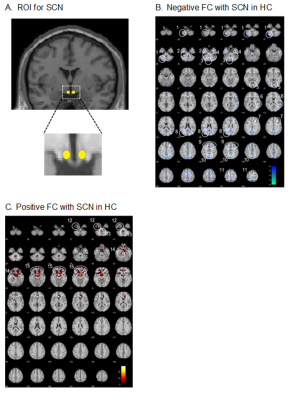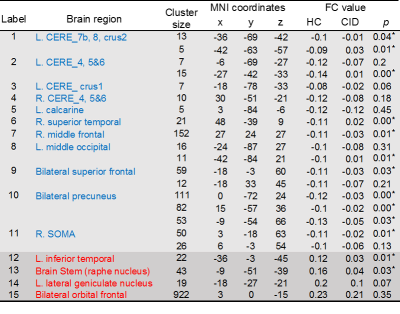Ran Pang1,2, Jianli Wang3, Karunanayaka Prasanna3, Kuncheng Li4, and Qingxian Yang2
1Department of Radiology, Dongfang Hospital, Beijing University of Chinese Medicine, Beijing, China, 2Department of Neurosurgery, Pennsylvania State University College of Medicine, Hershey, PA, United States, 3Department of Radiology, Pennsylvania State University College of Medicine, Hershey, PA, United States, 4Department of Radiology, Xuanwu Hospital, Capital Medical University, Beijing, China
1Department of Radiology, Dongfang Hospital, Beijing University of Chinese Medicine, Beijing, China, 2Department of Neurosurgery, Pennsylvania State University College of Medicine, Hershey, PA, United States, 3Department of Radiology, Pennsylvania State University College of Medicine, Hershey, PA, United States, 4Department of Radiology, Xuanwu Hospital, Capital Medical University, Beijing, China
The circadian rhythm functional network (CRFN) elucidated, consisting of a
positive and a negative FCs in the cerebrum and cerebellum. Chronic insomnia patients
exhibited an extensive weakening of FCs and an augmented local functional activity
that correlated with clinical symptoms.

